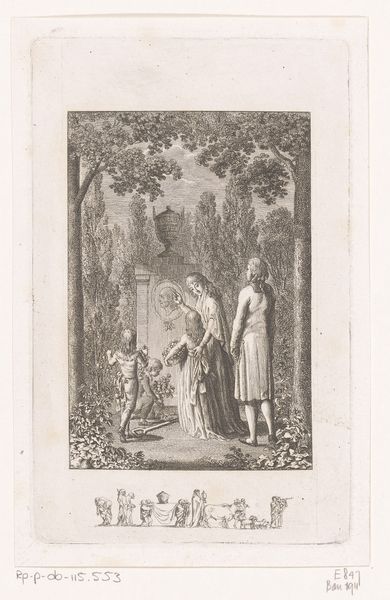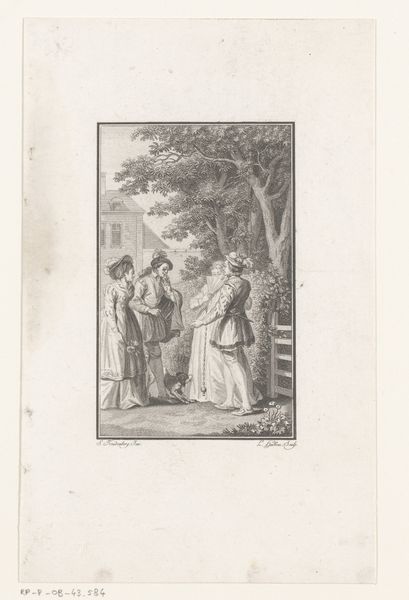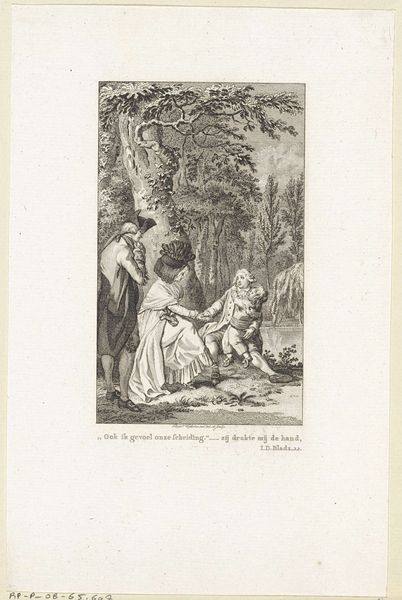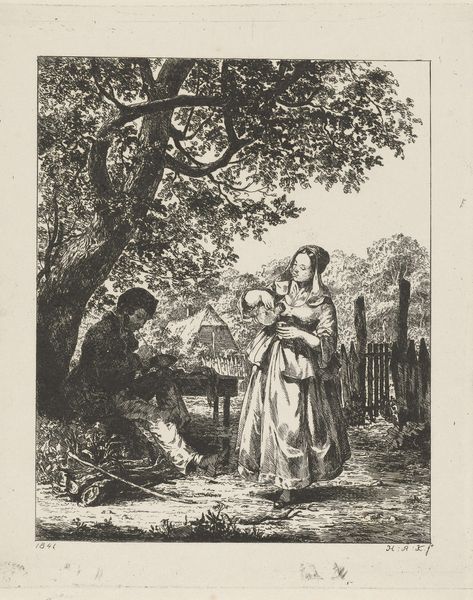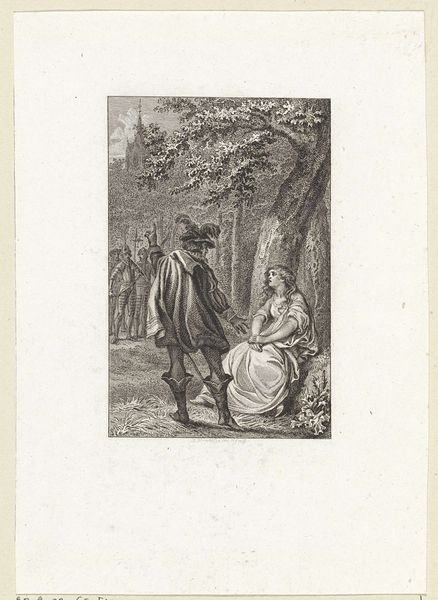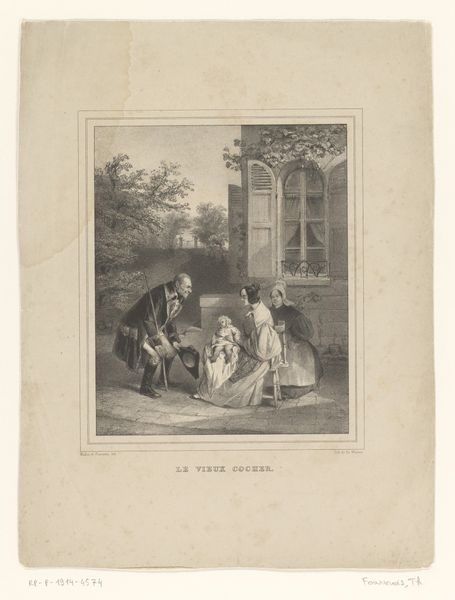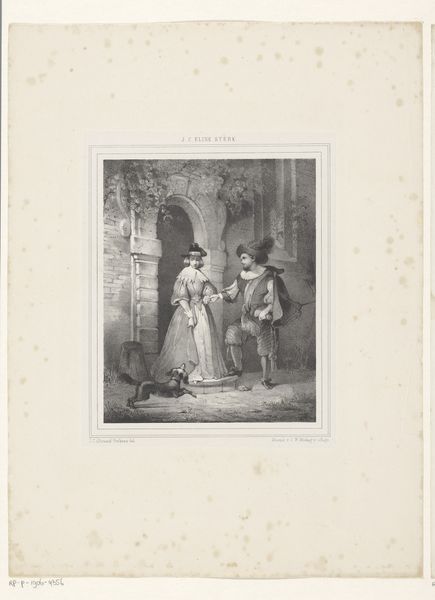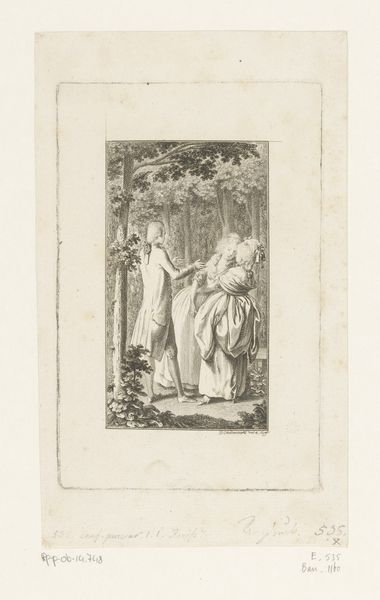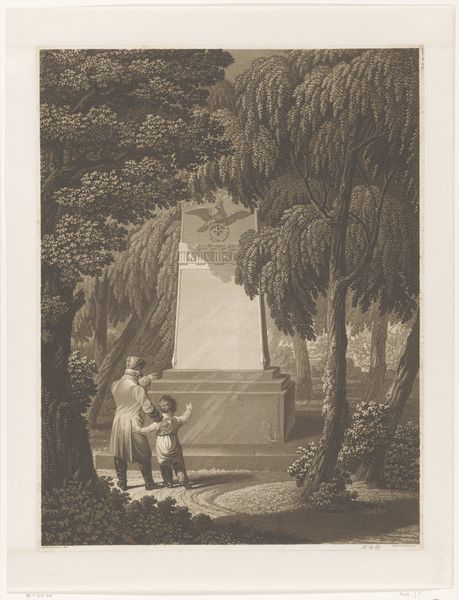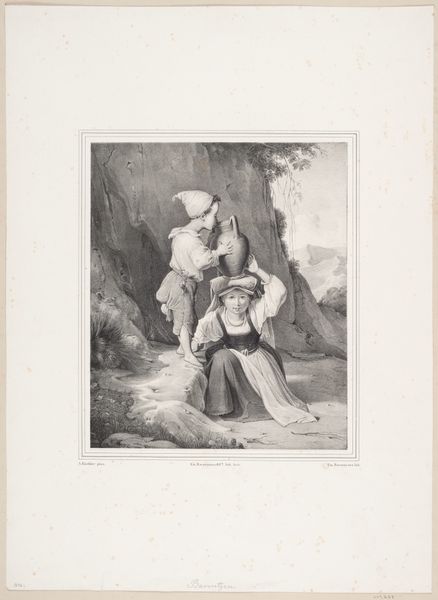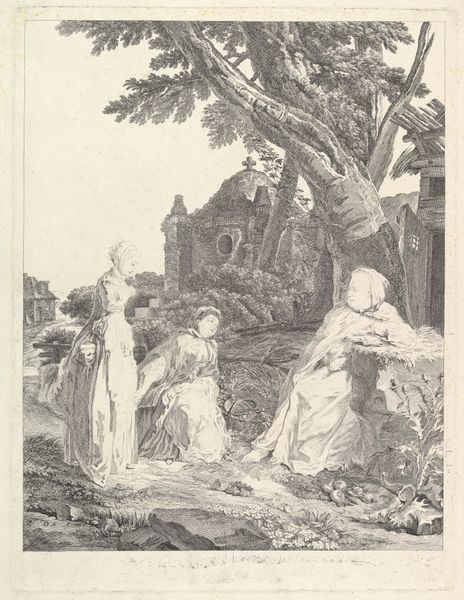
Dimensions: height 151 mm, width 111 mm
Copyright: Rijks Museum: Open Domain
Curator: This is an engraving titled "Three Children at Their Mother’s Grave," thought to have been created between 1830 and 1877, and attributed to Leopold Beyer. It captures a very particular mood, wouldn't you agree? Editor: Utterly melancholic, but there’s a strange sweetness to it. They're holding hands, these children. Almost like they're protecting each other, or trying to, anyway. The stark contrast in light creates a dramatic focal point on their figures amidst the gloomy background. What symbols stand out to you here? Curator: The weeping willow, of course. Its cascading branches traditionally represent grief and mourning. The roses blooming near the grave may signify love and remembrance, defying death. Then, the church spire is just visible through the foliage; it certainly hints at solace and faith, a beacon of hope in the distance. I'm very struck by how Romantic Era aesthetics use landscape to evoke deep emotional responses. Editor: It makes you wonder what their mother was like, doesn’t it? Did she tend those roses herself? And that church looks almost protective looming over them. Although, those children are very primly dressed in their Sunday best, as though they were brought here, you know, not really reckoning with the space on their own terms. What sort of societal scripts were at play then, I wonder? Curator: Exactly, there is also a sense of idealization in this portrayal. Deathbed scenes, particularly those of women, became increasingly popular during this era. Representing them offered artists to showcase vulnerability but within strict moral and sentimental confines. Images like these reinforced concepts of virtue and domesticity associated with motherhood. The symbol is a constant reinforcement of ideals, not a representation of lived lives, I sometimes think. Editor: I hear that, and at the same time, can’t help imagining this particular little troupe wandering off after and finding some mischief, whispering jokes about how somber everything is and just being, you know, alive, right there, beside the great unknown. Curator: Well, that contrast does give us much to ponder. Thank you for sharing that evocative image, a space for mourning, a space for continued life, they are so inextricably intertwined! Editor: Yes, the children embody grief while being signs of continuous life, like little tenacious weeds growing right through concrete. A powerful and memorable scene.
Comments
No comments
Be the first to comment and join the conversation on the ultimate creative platform.

